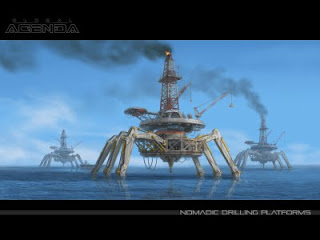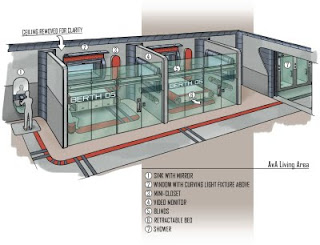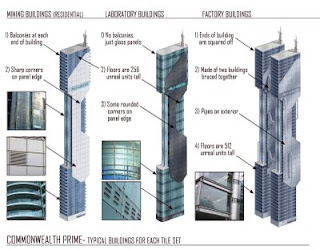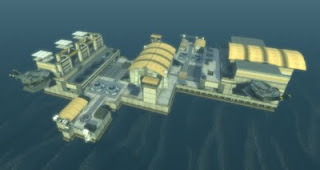Friday, January 6, 2012
Thursday, January 5, 2012
Game Environments
These are concepts for the action MMO Global Agenda, done in a range of styles for different situations. I see concepting as primarily a communication tool, and as a finite resource in a production pipeline. When I produce a concept I keep its purpose in mind. Is it to sell a style to non-artists or get a greenlight from a publishing partner? If so then a polished illustration may be needed. Is the goal is to communicate an idea to an LD for a quick blockout? Then a line drawing or even a sketch on a post-it may suffice.


























Tuesday, January 3, 2012
Sunday, January 1, 2012
My environment design process
I like to work hand in hand with the Level Designers on a daily basis with the goal of getting environments in-game and testable as soon as possible. The process generally starts with brainstorming theme and gameplay and gathering reference. Then the LD creates a temporary block-in model of the game level in 3D. I take screenshots of the level and create lineovers and paintovers to make the LD's grey boxes look more like a game environment. The LD revises the level, we playtest it and then rinse and repeat as many times as needed to get something solid.
The example below is from the action MMO Global Agenda that I worked on for Hi-Rez Studios. It was built in Unreal, but the process is similar for other game engines. The first image is a block-in of a three-point objective control map that the LD created using BSP and cobbled-together assets. This map was playtested and tweaked before we started to art it up.

The level was supposed to be a floating control panel for an oceanic zone of the game world. Although the game was set 150 years in the future, I always tried to start with real-world reference to keep my designs convincing. In this case, I decided to combine the look of oil rigs and aircraft carriers.

Below is an example of a white line paintover of a level. I like these because they're fast, but they convey plenty of information for a environment artist to build from. Also it's easy to push them further into a polished concept. I like to use a 3/4 aerial view like this because you can see everything. We called these "Disneyland maps," because they're similar to those park illustrations in style and purpose.
In general, my job as a concept artist working on a game level is to make a map look better without messing up the gameplay. In the original LD block-in, the playspace was just a few feet above the water, but if you went off the edge you died. That didn't make a lot of sense. I suggested that we raise the playspace way up on a floating platform, so there would be a reason for you to die if you fell off the edge.
The map is symmetrical, so we wanted unique looking shapes to define each side of the map so the player could always keep their bearings. I decided to put big radomes on one side, and a giant antenna mast like ones on a carrier on the other.

Here, I've taken the paintover to a more finished concept:

And finally here's a shot of the final map in-game:

The example below is from the action MMO Global Agenda that I worked on for Hi-Rez Studios. It was built in Unreal, but the process is similar for other game engines. The first image is a block-in of a three-point objective control map that the LD created using BSP and cobbled-together assets. This map was playtested and tweaked before we started to art it up.

The level was supposed to be a floating control panel for an oceanic zone of the game world. Although the game was set 150 years in the future, I always tried to start with real-world reference to keep my designs convincing. In this case, I decided to combine the look of oil rigs and aircraft carriers.

Below is an example of a white line paintover of a level. I like these because they're fast, but they convey plenty of information for a environment artist to build from. Also it's easy to push them further into a polished concept. I like to use a 3/4 aerial view like this because you can see everything. We called these "Disneyland maps," because they're similar to those park illustrations in style and purpose.
In general, my job as a concept artist working on a game level is to make a map look better without messing up the gameplay. In the original LD block-in, the playspace was just a few feet above the water, but if you went off the edge you died. That didn't make a lot of sense. I suggested that we raise the playspace way up on a floating platform, so there would be a reason for you to die if you fell off the edge.
The map is symmetrical, so we wanted unique looking shapes to define each side of the map so the player could always keep their bearings. I decided to put big radomes on one side, and a giant antenna mast like ones on a carrier on the other.

Here, I've taken the paintover to a more finished concept:

And finally here's a shot of the final map in-game:

Subscribe to:
Posts (Atom)







